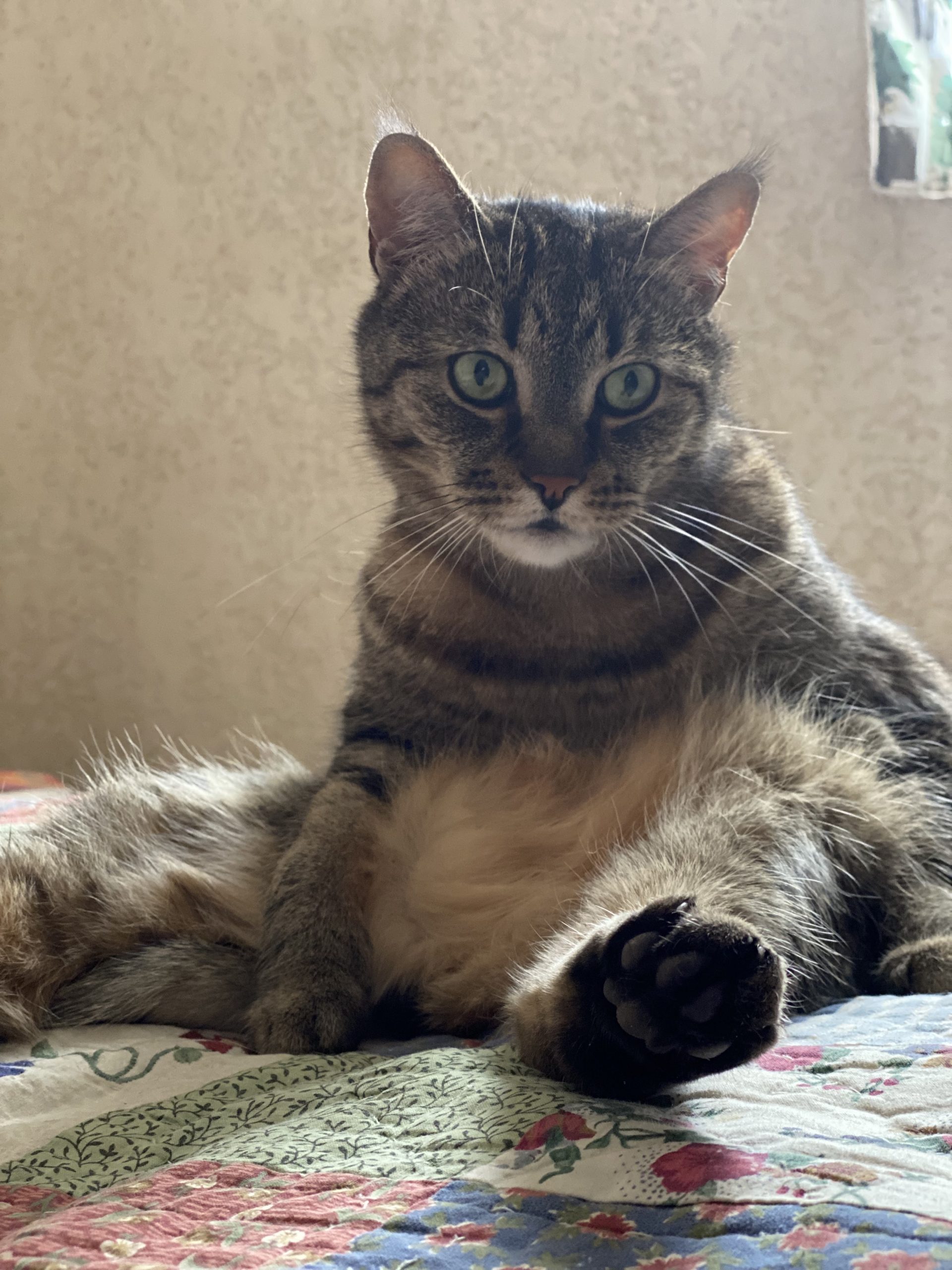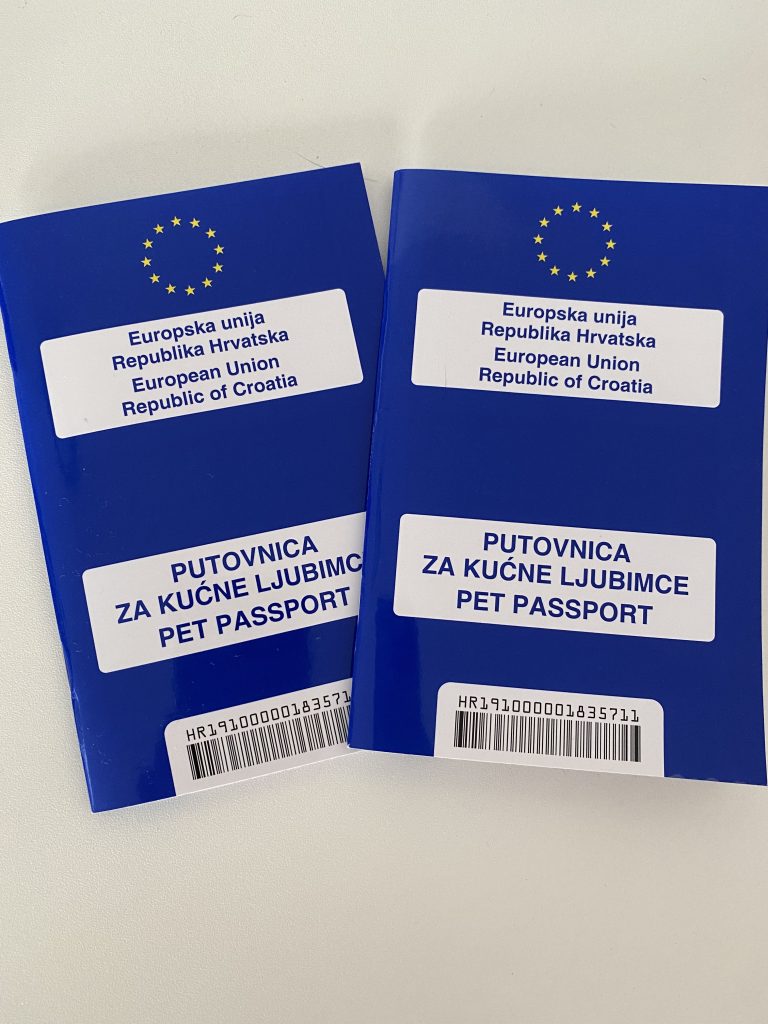International Flying with Cats

While Mexico was a trial run for travelling with our cats in some ways, in other ways, not so much.
Abe and Lincoln got the experience of being in their carriers for long periods of time and staying in new locations. We learned how long it took before they got antsy and how anti-anxiety meds impacted each of them (Gabapentine calmed Abe down while it just made Lincoln more stressed). We also tried Xanax with Lincoln and it made him both hyper and incredibly loopy — he couldn’t walk in a straight line and kept falling over. Clearly, Xanax was not the way to go for this guy!
But, there was no paperwork required to bring the cats to Mexico. No one at the border, on either side, seemed to notice or care that we were travelling with our pets.
Some background:
Basically as soon as we knew we were going to be travelling long distances with them, we got some comfortable carriers for them, at our vet’s suggestion. We ended up getting two different types — the Sleepypod Air which provides a fair amount of darkness for the animal and is designed so it easily can sit atop rolling luggage and the Jet Sitter Luxury Soft Sided Pet Carrier which lets more light in and can expand on either side. We left the carriers out for the cats to explore months before we used them so they got comfortable and used to them. We never used them to transport Abe and Lincoln to the vet so the cats didn’t have any negative associations with the carriers.
 We purchased a few other items for travelling. We got harnesses for both cats which gave us a bit more control if they needed to get out of the carrier at any point. We also got a travel litter box for use in the airports.
We purchased a few other items for travelling. We got harnesses for both cats which gave us a bit more control if they needed to get out of the carrier at any point. We also got a travel litter box for use in the airports.
As soon as we booked our international flight, I called the airline and added the cats to the reservation. You can do this up until 48 hours before flying but there is a limited number of animals allowed on each flight so it is advisable to do it asap.
One of the big tasks that I had to take care of during our brief stop in Portland was getting the paperwork squared away for Abe and Lincoln to travel to Europe. I had done some legwork in advance.
There are only a few vets in Portland that are certified to complete the necessary paperwork. We went with VCA Rock Creek due to the knowledge they displayed in my initial phone call. We discussed the vaccination requirements and made sure that Abe and Lincoln were up-to-date on their shots before the visit, specifically rabies. The rabies vaccination certificate has specific requirements – it needs to be signed in blue ink, include the make and lot of the vaccine, and have the microchip info on it.
The vet visit needed to happen within 10 days of arriving in Europe so it’s a pretty tight timeline. At the vet visit, the vet examines the cat(s), scans their microchip(s), completes a lengthy form and composes a letter that states the animal is in good health. The form, letter, and the rabies certificate all then gets sent to the nearest USDA office where an official certifies it. The nearest office to Portland is in Tumwater, Washington.
 The turnaround time from the USDA was super quick – the docs were sent back to us the day after they were received by the USDA.
The turnaround time from the USDA was super quick – the docs were sent back to us the day after they were received by the USDA.
The documents need to be overnighted with a check and a return pre-paid envelope. I initially tried to do this via FedEx but ran into some issues. You need a FedEx account in order to arrange for a return pre-paid envelope which I was unaware of. At the FedEx facility, an account was created for me but because it was close to end of day there was a delay in activating the account and so it wouldn’t work.
The next day, we were able to send out the docs and create the return via UPS. I’d recommend just going straight to UPS unless you have a FedEx account. Sending the docs via UPS was very simple and cheaper than FedEx.
 Check in was easy – we had to pay for them at the check in counter and fill out a form for each cat. At security, we requested a private screening room (thanks to the advice of a friend). Not all airports offer this but it made security a lot less stressful – otherwise, you have to take the cats out of the carriers and walk them through the metal detector.
Check in was easy – we had to pay for them at the check in counter and fill out a form for each cat. At security, we requested a private screening room (thanks to the advice of a friend). Not all airports offer this but it made security a lot less stressful – otherwise, you have to take the cats out of the carriers and walk them through the metal detector.
I was very anxious about flying with the cats. I thought they would be miserable, that they would be loud and disturb everyone around us, and that they would have a bathroom accident on the plane. It all turned out to be fine.
We had a few hour layover in Frankfurt where there are no pet relief areas. We luckily found an unpopulated, dark corner and were able to let the cats out of their carriers, on their leashes, give them some food and water, and offer them the litterbox (which neither took us up on).
When we finally landed in Zagreb and claimed our bags, we walked through customs and I pointed out that we have cats. They merely replied, “cute!” and that was that. No examining paperwork. Nada.
 Luckily, the cats adjusted well and quickly to our new digs.
Luckily, the cats adjusted well and quickly to our new digs.
The final step was to get them EU Pet Passports. I quickly learned that email is not a commonly used form of communication in Zagreb, at least not for business. We finally stopped in at a vet that was close-ish to us and they were incredibly helpful, handle Pet Passports (not all do this) and even had an appointment the next day.
Pre-COVID, you would have to go into your local police station to obtain one. Now you can request one online and found this website to be very helpful in figuring out the steps. It took about 10 days to receive the email with the link to retrive the OIB (there is no way of checking the status — you just have to patiently wait). Once you receive the link, you need to fill out some of the original info you submitted and it is helpful to know that the abbreviation for the US in Croatian is SAD!

We found out at the vet appointment that in Croatia one needs an OIB (pronounced: OYE-b) in order to get a pet passport. An OIB is the Croatian tax-ID number which you can get even if you aren’t a resident.
Once we had our OIB in hand, back to the vet we went. And voilà — just like that Abe and Lincoln now have EU pet passports!
Essential Purchases for Traveling with Cats:
- An expandable cat carrier or a more secluded cat carrier
- Harness with leash
- Travel litter box
- Travel scratching pad for when you arrive at your destination
- Large supply of any medication your cat needs
- Some of their food that your cat likes / is used to
General Tips for Traveling with Cats:
- Make sure your cat is up to date on all vaccines, especially rabies
- Make sure your cat is microchipped with an ISO compatible microchip (this ensures it can be scanned), that you know approximately when the microchip was inserted, and that you have the number documented
- Try out all medications in advance
- Purchase the carrier you’ll be using in advance and leave out for your cat to get used to it
- Book your cat’s reservation on your flight asap
- Spend some time thinking through the complete travel day and make sure you have various supplies in your carry-on for potential situations
- Travel with all pet paperwork in your carry-on
Tips for Traveling with Cats from the US to Europe:
- Find a USDA vet and make an appointment asap based on when you are flying out (remember the 10 day timeline) — vets are very busy these days and USDA vets are in limited supply
- Verify with the USDA vet what paperwork is needed including the rabies vaccine certificate
- Find the nearest USDA office and prepare the check, return pre-paid envelope, and rabies certificate in advance of the vet visit
- Confirm the requirements of the country you are traveling to
- Upon arrival to the EU, find a vet that issues EU Pet Passports — make sure to bring all paperwork with you to the visit


2 Responses
Wow, great tips! Super useful!
What a great trailblazer you are, Julia. Thanks for all the practical and helpful tips!